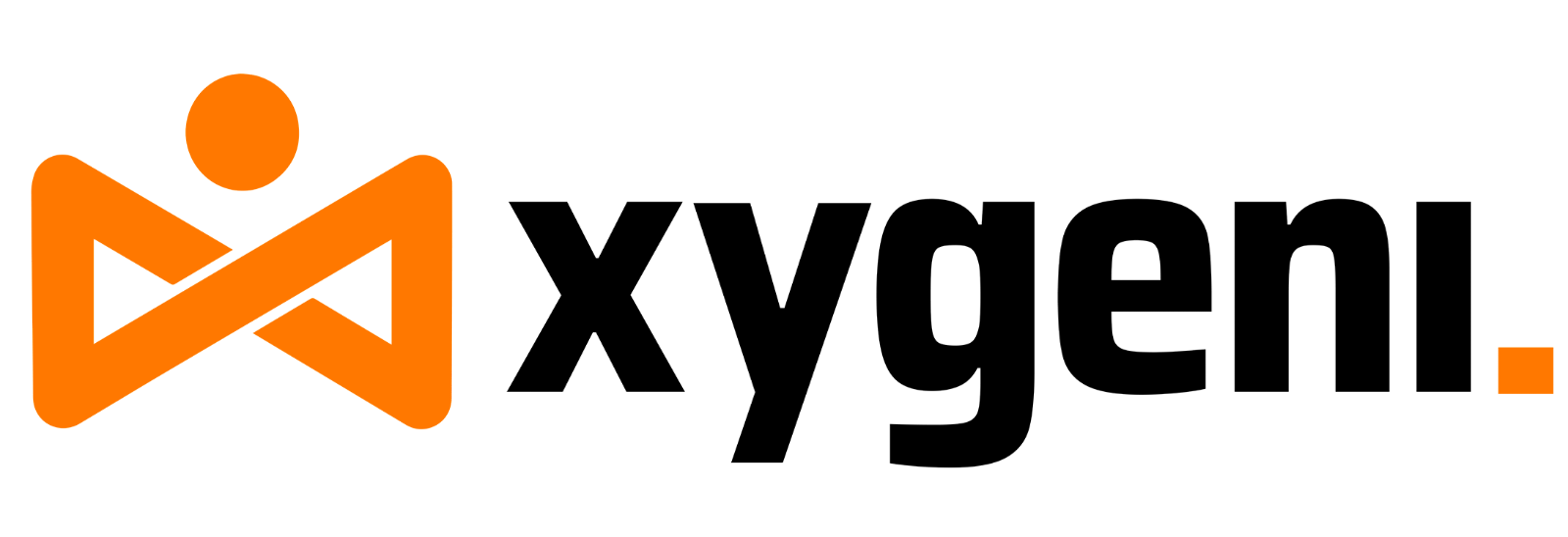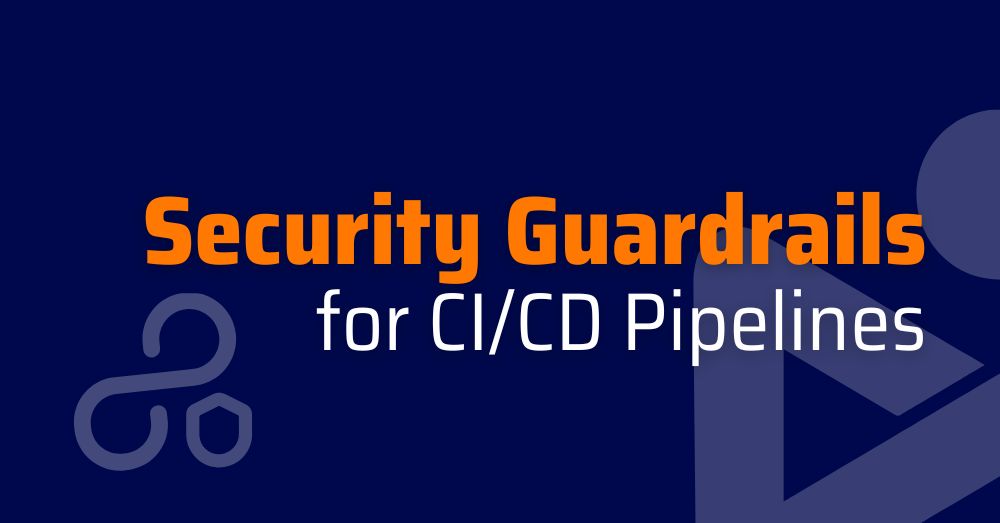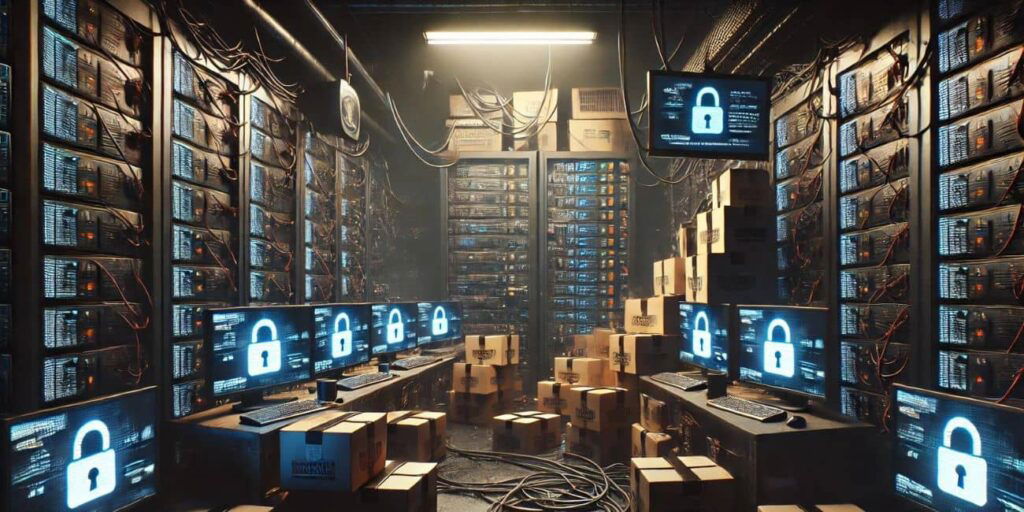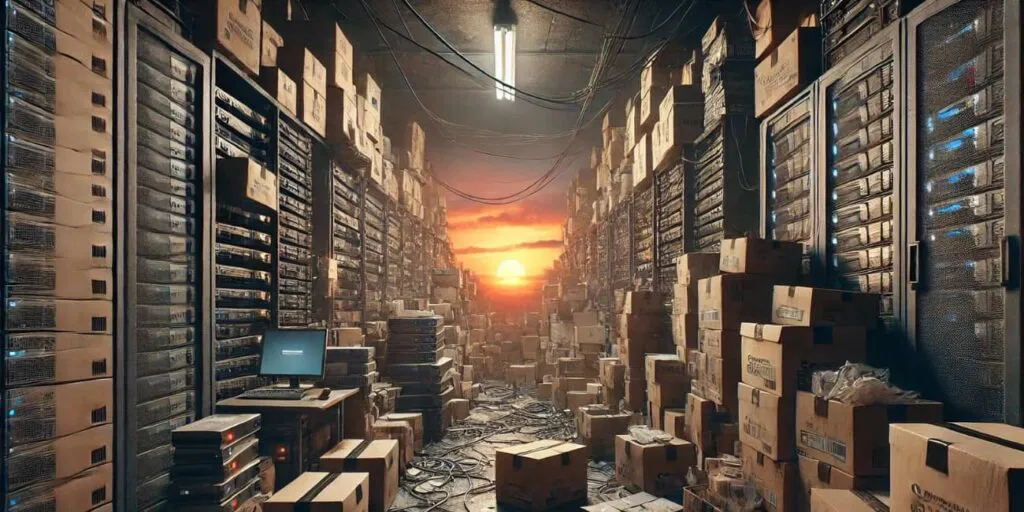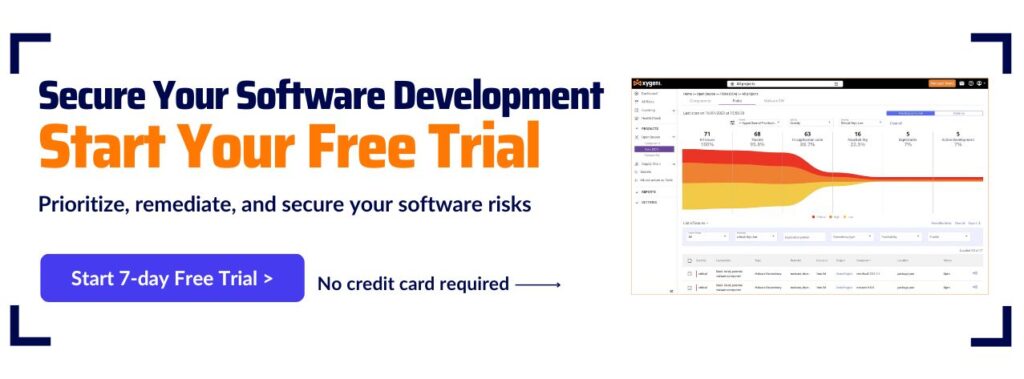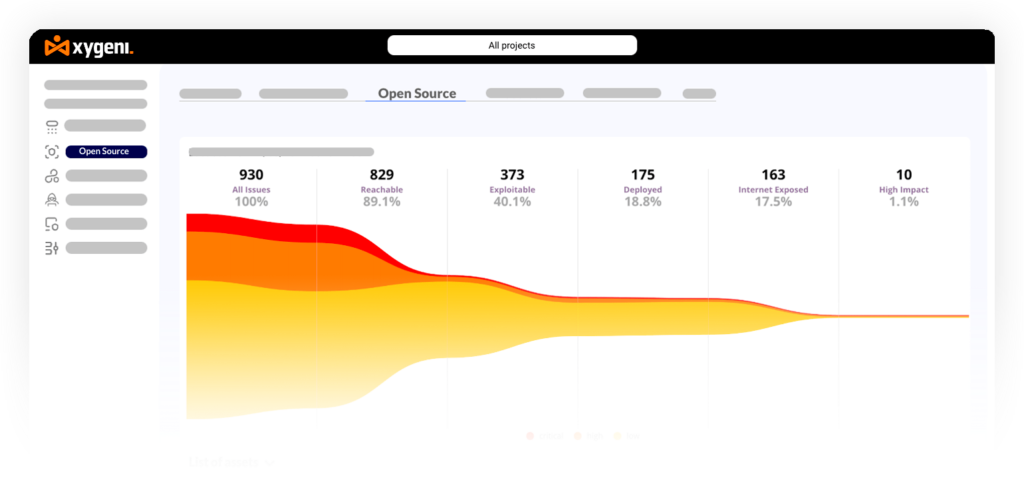Modern DevOps teams need to move fast, but they also need control and protection. That’s where security guardrails come in. Acting as an automated layer of policy management software across the development lifecycle, these DevOps guardrails help teams maintain strong CI/CD pipeline security by blocking unsafe merges, detecting risky configurations, and enforcing secure workflows automatically.
With Xygeni Guardrails, this protection just became easier to manage. The new WebUI release lets you view, edit, and apply all guardrails directly from the interface, making policy enforcement faster and simpler for every developer.
What’s New: Manage Security Guardrails in the Xygeni WebUI

The latest Xygeni release introduces full guardrail management directly in the WebUI. From the new section in the sidebar, teams can easily see all active guardrails, edit their logic, and track their status across projects.
From this interface, you can:
- List and filter all existing guardrails with their current state.
- Create, edit, and delete guardrails without leaving the dashboard.
- Upload guardrails from file or edit them inline using the built-in syntax editor.
This improvement simplifies the entire workflow. Instead of writing or updating guardrails through configuration files, teams can manage them visually. As a result, security policies stay consistent across pipelines with less manual work and better visibility.
What Are Security Guardrails in Software?
In simple terms, security guardrails are automated rules that prevent risky actions inside your development and delivery process. They work as part of your policy management software, giving you control over what happens in every pipeline without slowing developers down.
Instead of relying on manual reviews or late-stage scans, these DevOps guardrails automatically stop unsafe behavior before it reaches production. They act as predefined policies that decide what should pass, what should be fixed, and what should be blocked, all in real time.
For example, a security guardrail can:
- Fail a build if secrets are found in the code.
- Block a merge when a dependency includes a critical vulnerability.
- Stop deployment if a configuration file violates a security standard.
In other words, security guardrails act like intelligent safety rails for your DevOps workflows. They keep your pipelines fast, compliant, and secure while ensuring consistent CI/CD pipeline security across every project.
How Security Guardrails Strengthen CI/CD Pipeline Security
Guardrails are not static checks. Rather, they are dynamic policies that respond to real conditions in your pipeline.
Each rule includes conditions (when this happens) and actions (then do that), so your build or merge stops exactly when a violation appears.
For instance:
- Detect secrets: Stop commits when API keys or credentials appear in code.
- Check dependencies: Fail builds if a new dependency introduces a critical CVE.
- Validate configurations: Flag IaC templates with exposed ports or unsafe defaults.
Because guardrails run at pipeline runtime, they ensure CI/CD pipeline security without adding bottlenecks. Developers can keep pushing code quickly, while the system enforces the rules automatically.
For a broader overview of CI/CD security principles, see the OWASP CI/CD Security Guidelines.
Xygeni Guardrails as Policy Management Software for DevSecOps
As part of its policy management software, Xygeni turns manual rules into automated DevOps guardrails that run across every project. These guardrails enforce the same security policies for developers, operations, and compliance teams, helping unify CI/CD pipeline security efforts company-wide.
Each guardrail follows a simple logic structure defined in XyFlow, Xygeni’s domain-specific language for automation. Rules can be adapted to fit different needs, from blocking critical secrets to stopping risky configuration changes, all through clear, readable expressions:
guardrail
on secrets, misconf
when severity = 'critical'
then @exitcode(167)
This rule means that when a critical secret or misconfiguration appears, the build stops immediately.
In this way, guardrails act as an intelligent layer for automated policy enforcement, allowing DevSecOps teams to maintain compliance as code moves through the pipeline.
Creating Custom Guardrails: Real Examples and Use Cases
Xygeni includes many ready-to-use examples so teams can adapt quickly:
1. Exit on critical issues
on any
when severity = 'critical'
then @exitcode(167)
2. New critical secrets not allowed
on any
when severity = 'critical'
then @exitcode(167)
3. High confidence misconfigurations
on cicd
when severity >= 'high' and confidence >= 'high'
then @exitcode(177)
Each rule helps prevent a different type of risk, and all can be managed directly from the WebUI.
In addition, Xygeni integrates with GitHub, GitLab, Jenkins, and Azure DevOps, allowing guardrails to report back through commit status checks or comments automatically.
Best Practices for Implementing Security Guardrails
To get the most value from guardrails, it is important to apply consistent policies across every project.
When setting up security guardrails, treat them as living parts of your policy management software. Regularly update your DevOps guardrails as your tools and threats evolve, and review their behavior in every pipeline to maintain continuous security.
The table below summarizes key practices to keep pipelines secure and compliant.
| Category | Best Practice | Why It Matters |
|---|---|---|
| Access Control | Apply least privilege for tokens and runners | Prevent unauthorized access |
| Secrets Management | Block exposed credentials in code or logs | Reduce risk of leaks |
| Dependency Security | Scan and validate open-source packages | Stop malware and vulnerable versions |
| IaC Validation | Check IaC files for risky configurations | Prevent misconfigured infrastructure |
| Policy Enforcement | Add guardrails to block insecure merges | Automate compliance directly in CI/CD |
| Continuous Monitoring | Review guardrails and policies regularly | Keep pipelines aligned with security goals |
Final Thoughts
Security guardrails represent a practical shift in how modern teams apply security. Instead of adding checks at the end of development, they bring protection directly into the delivery process. By turning rules into automated controls, teams reduce errors, avoid misconfigurations, and keep pipelines secure by design.
With Xygeni Guardrails, organizations gain a flexible layer of policy management software that adapts to any CI/CD environment. These DevOps guardrails make compliance continuous and effortless, keeping security and productivity aligned at every stage of development.
Start building safer pipelines today. Define, manage, and apply your security guardrails directly from the Xygeni WebUI and experience a faster path to secure delivery.
